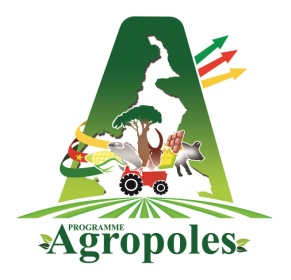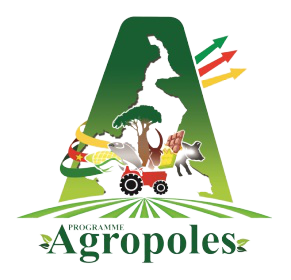Fattening stables under construction
The construction of stables are not to be found on every street corner. It is the very first experience in Cameroon and constitutes, for this purpose, a major asset for intensive breeding at the time of second-generation agriculture. This project, as a result of funding from the Three-Year Emergency Plan for Economic Growth Acceleration (PLANET), aims at modernising beef production systems through the construction of 74 stables in Meiganga and 44 in Banyo and their storage warehouses at a cost of over one billion seven hundred thousand CFA francs and one billion five hundred thousand CFA francs respectively.
The targeted objective of this project is on the one hand, to bring the annual production of the members of the Meiganga agropole from 3,802 heads to 7,500 heads of cattle and those of the Banyo agropole from 1,650 heads to 4,950 heads of cattle. On the other hand, it is a matter of marketing all the production obtained. Job creation is not to be neglected.
Expected outputs from these two agropoles, constitute a major source of raw materials to the Ngaoundere industrial slaughterhouse; whose slaughtering capacity is estimated at 250 animals per day. The objective is not only to consolidate the country’s food security, but also to export the surplus meat to the Central Africa sub-region. Construction work has started.
The current percentage of work realised so far could be tabled at 50% in Banyo and 20% in Meiganga. These stables are of 02 (two) types: 50 heads and 25 heads with surface areas of 255m2 and 132m2 respectively and their subsequent inputs warehouses of 30 and 15m2. They each consist of a service corridor in the middle, access and supply corridors limited by separation and partitioning systems in galvanised 50/60 stainless steel metal pipes (Cornadis), watering holes, mangers and manure pits.
They will then make it possible to fight against bad weather conditions (such as rain and prevailing winds); secure animals as assets; to better rationalise and distribute feeds, as well as veterinary services; reduce the rearer’s working time; recover all the manure, thereby insuring the overall animal hygiene. The project managers should realise, for their part, additional infrastructures, notably the establishment of 5 to 10 hectares of fodder fields, the construction of wells, hay storage sheds and housing for the rearer.
One of the benefits of these two agropoles is the improvement of rearers’ habitats and their families. The rearers cease to be sub-humans and become real economic stakeholders. By improving on their habitat, the Agropoles Programme makes a significant contribution to improving the domestic hygiene of shepherds, and hence to promoting the slogan “Health for all”.
























